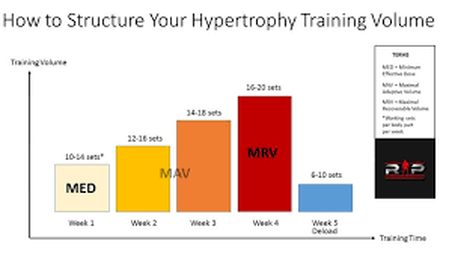Training Volume & Load Management, Part 1: How Much Is Too Much?
Feb 28, 2019With the CrossFit Open upon us and beach bod season approaching, people will be fitnessing. A LOT. With this, comes the opportunity for injuries to sneak up and leaving performance on the table.
People typically blame certain factors for an injury or lack of performance:
- Flexibility, mobility, lululemon leggings, biomechanics, nutrition, national emergencies, etc.
While these factors are definitely important to consider, there’s one that gets overlooked and is quite often the culprit:
TRAINING VOLUME
I had a patient come in a month ago who was dealing with foot and ankle pain. It has been on and off for months, and she decided to get it checked out due to a recent exacerbation. She’s a ½ marathon runner who also does Orange Theory a few times a week. She was starting to increase her mileage for her ½ marathon coming up. I think you know where this is going…
Before trying to change up her running mechanics, change her shoes or blaming it on “overpronation,” we had a conversation about her training volume. I asked her how her running mileage and volume been. In this discussion, she said she went from 3 miles to 6 miles within a weeks time. BINGO. She was confused as she had previously ran this much mileage in the past, BUT... it’s been a couple months.
I also asked her about the first time she ever dealt with this same issue – she said she couldn’t really think of why it initially started – “maybe running form or my shoes?”. I asked her when she started Orange Theory – lightbulb went off. BINGO again.
Let me be clear – there’s nothing wrong with her doing both running and Orange Theory. There is when your body is not prepared for the demand of these tasks. This was and is a volume issue, and if you’re reading this, think back to a previous non-contact injury and see if you can attribute any other factors playing into that specific injury – moreso volume in this case.
Now, mobility, biomechanics, strength, etc., all play roles into whether we are operating as optimally as possible from a performance standpoint. For this patient, we did work on strength in certain areas and tweaked some things from a running standpoint, but the big component of her rehab was starting at a volume she could tolerate without pain or just a little, and progress forward from there.
Training volume falls under the umbrella of Load Management (coming in Part 2) and is a big reason why injuries occur.
Some common methods of measuring training volume include counting the number of sets to failure, the volume load (sets x reps x weight), distance, number of sprints, etc.
Here are some terms to understand:
Maintenance Volume (MV) – How much volume you need to maintain your gains
Minimum Effective Dose (MED) – Smallest amount of stimulus needed to drive positive adaptation. If we are below this threshold, then there will be no adaptation.
Maximum Adaptive Volume (MAV) – Here we are training at our optimal range of volume that we can adapt to and recover appropriately to drive optimal performance
Maximum Recoverable Volume (MRV) – This is the absolute maximum volume that your body can handle and recovery from. Sometimes it’s necessary to pass this threshold from time to time, called overreaching, in order to elicit greater adaptations. Important point here is to make sure it is not often and that deloads are accompanying this high accumulation of volume to allow for supercompensation (the point of overreaching to get the training effect you want – improved strength, power, speed, etc.). When this is not appropriately monitored or constantly overreached without recovery, you open the door for injuries to occur and performance to suffer.
(credit to Mike Israetel of Renaissance Periodization for this concept)

The way this is laid out is that you start with your MED, progress to MAV, then MRV to overreach. However, notice that you don’t dance with MRV often, nor do you want to.
Overtime, your MRV will increase, meaning you’ll get stronger and develop more work capacity, as long as you intelligently handle your training volume.
A good rule of thumb is The 10% Rule - While there can be some variability here, staying within a 10% increase from the previous week tends to work well for a lot of people. It pushes that threshold in a progressive manner and allows appropriate recovery from the increased demand on the body.
Next week, in Part 2, we’ll take a deeper dive into load management and training volume, explore exactly what this concept means, and how to practically apply it to yourself or athletes you work with.
Cheers,
Dr. Ravi Patel, PT, DPT, CSCS
Let us help you figure out to live your best active life today!
Remember, Movement is Medicine!

